Visiting the Field Museum is always an adventure, but our recent trip was particularly memorable. We were there with Josh’s coworkers for a meeting and had a chance to visit the Bloodsuckers: Legends to Leeches temporary exhibit. As we explored the exhibit, we learned about all sorts of blood-feeding creatures, from mosquitoes to vampire bats (and some supernatural ones too). Join me as I share our journey through this fascinating and slightly creepy showcase, full of interesting facts and surprises. The Bloodsuckers exhibit closes September 2, 2024- so if you’re interested in visiting make sure you go before then!
Field Museum Basics

The Field Museum in Chicago is a renowned natural history museum.The museum features a wide range of exhibits on ancient cultures and biodiversity. It’s a major tourist attraction and an important center for scientific research. Besides the three floors of permanent exhibits, the Field always has a slew of temporary exhibits rotating in and out of the museum.
- Address: 1400 S. Dusable Lake Shore Drive, Chicago, IL 60605
- Hours: 9:00am-5:00pm daily (last entry at 4:00pm)
- Tickets: Ticket prices vary based on whether you are a Chicago, Illinois, or out of state resident. You can check prices and reserve tickets at: https://www.fieldmuseum.org/visit
How to See Bloodsuckers: Legends to Leeches
Bloodsuckers: Legends to Leeches is no longer open.
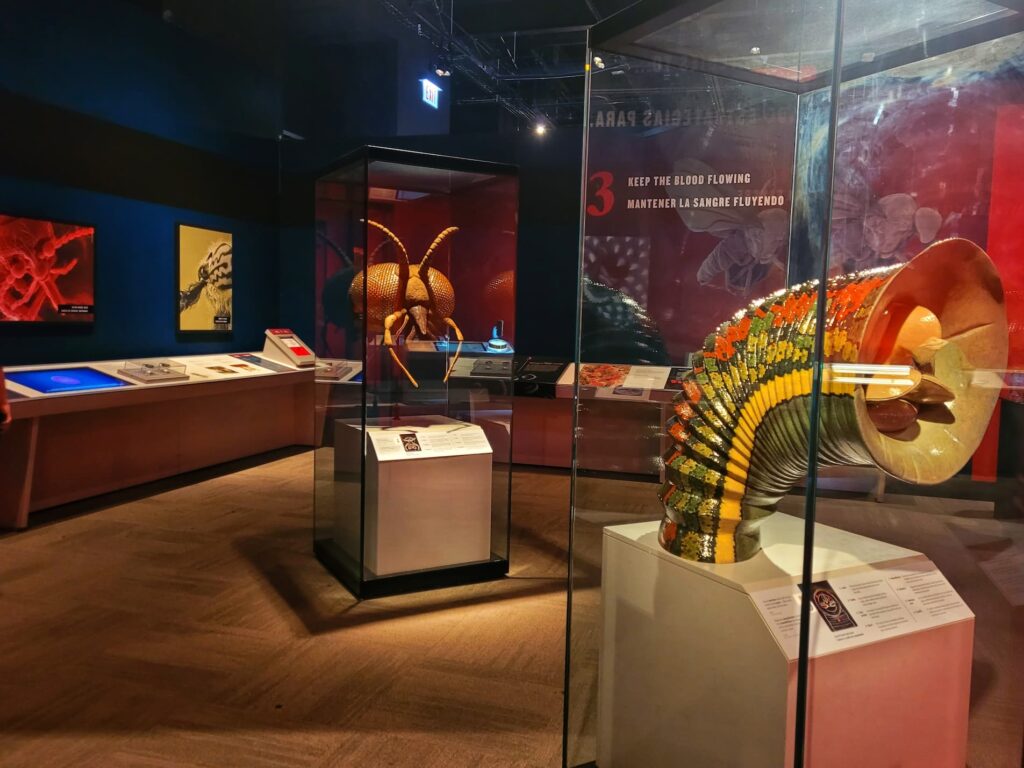
What is Bloodsuckers: Legends to Leeches About?
The Bloodsuckers: Legends to Leeches exhibit at the Field Museum explores the biology and mythology of blood-feeding creatures. It features interactive displays and real specimens, including vampire bats, leeches, and mosquitoes. The exhibit also delves into cultural stories and legends about these creatures, highlighting their impact on human history and science. You can learn about the ecological roles and medical uses of bloodsuckers.
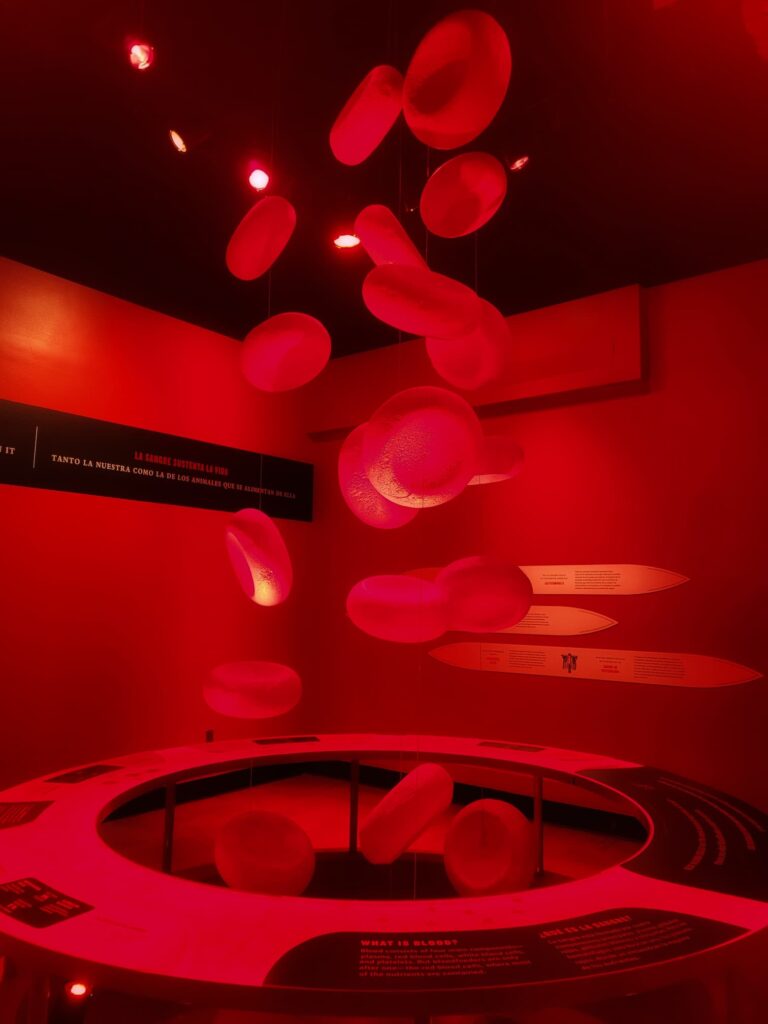
Highlights of Bloodsuckers Exhibit
Bloodsuckers: Legends to Leeches begins with learning all about nature’s real-life bloodsuckers. There are models, specimens, and live creatures to learn about such as leeches and lampreys, mosquitos, ticks, vampire bats, and more.
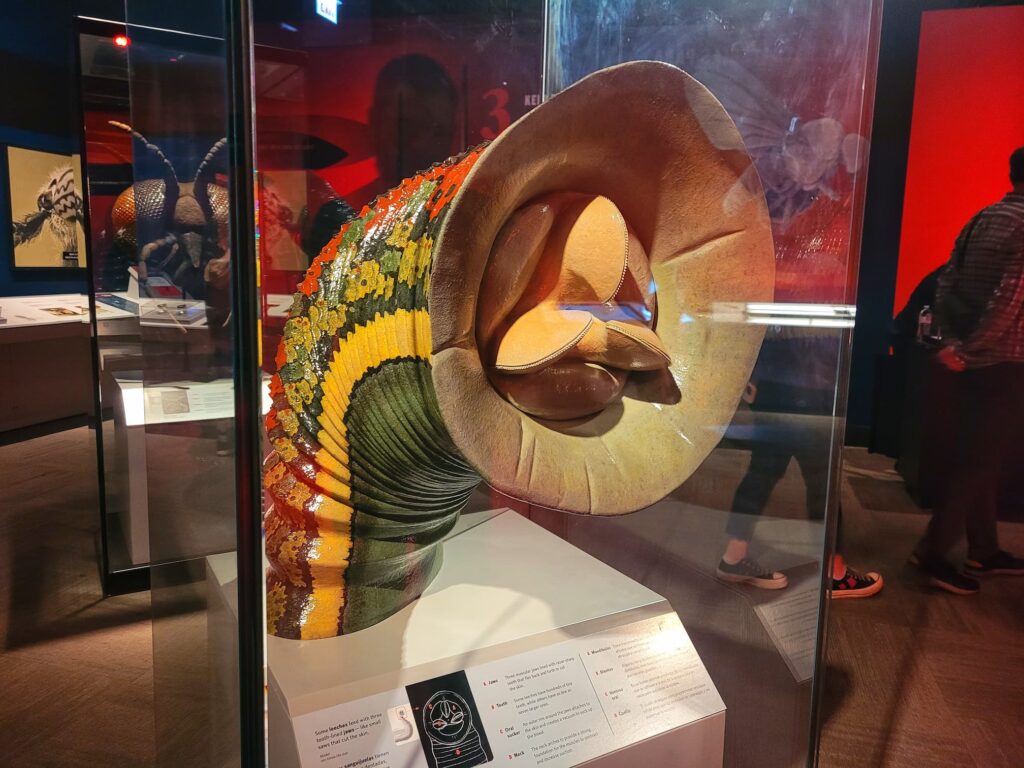
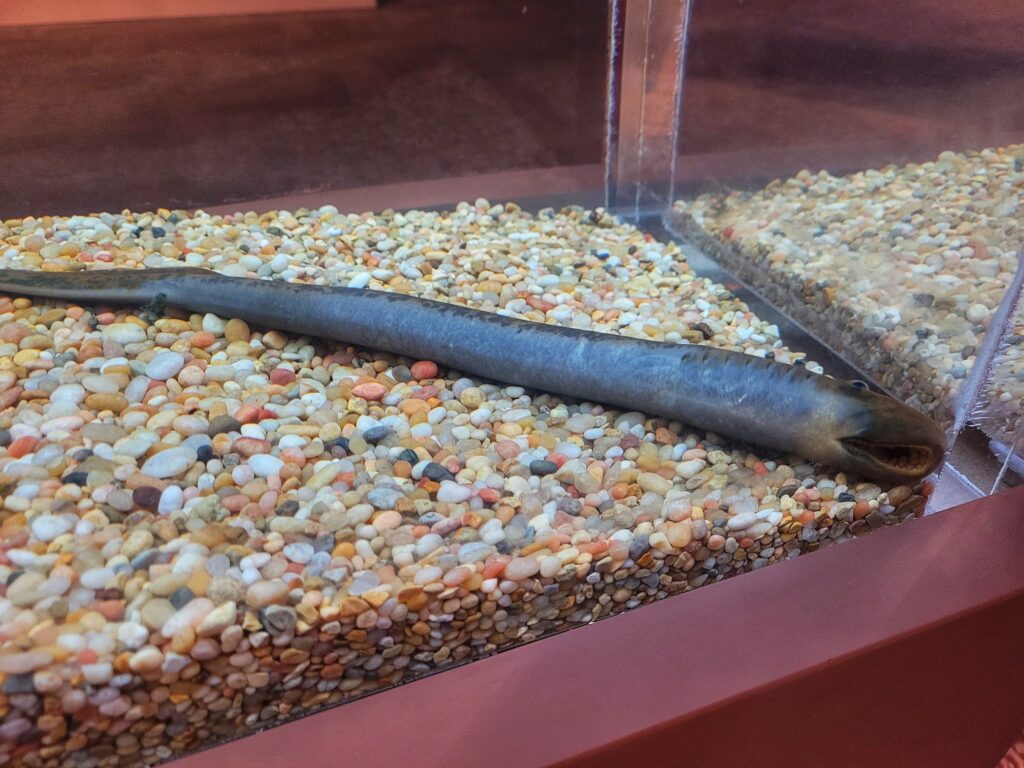
There is a large wall of specimens as well as individual cases.
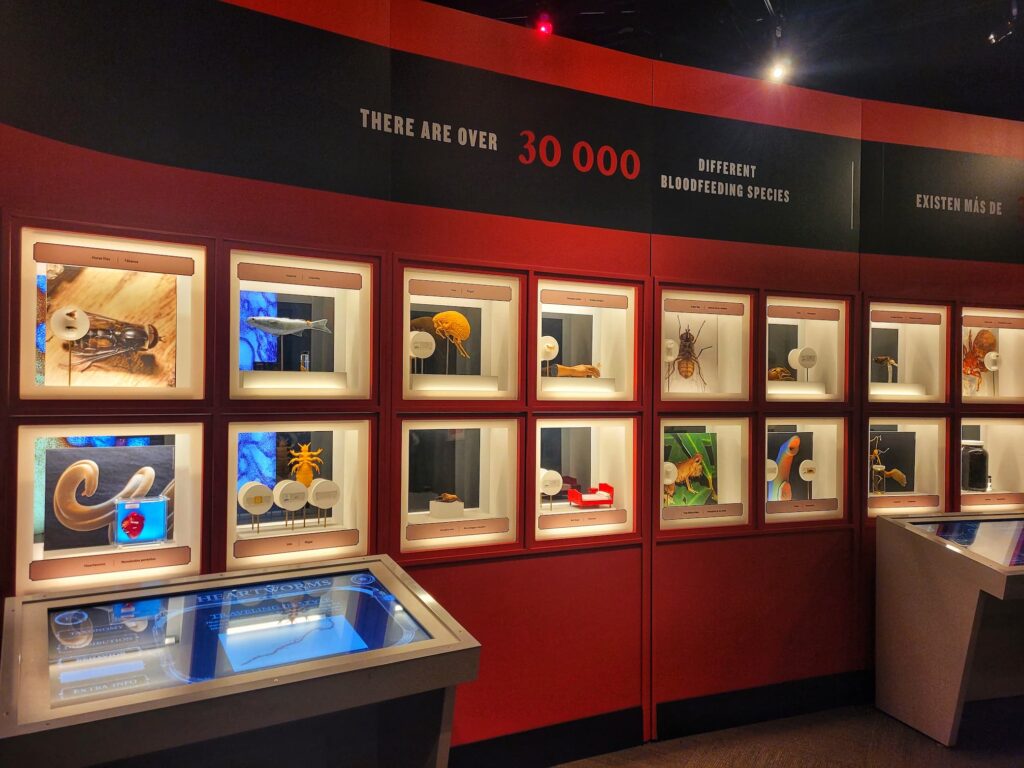
The largest real specimen is a cow and vampire bat exhibit.

And then the museum started getting into the supernatural…
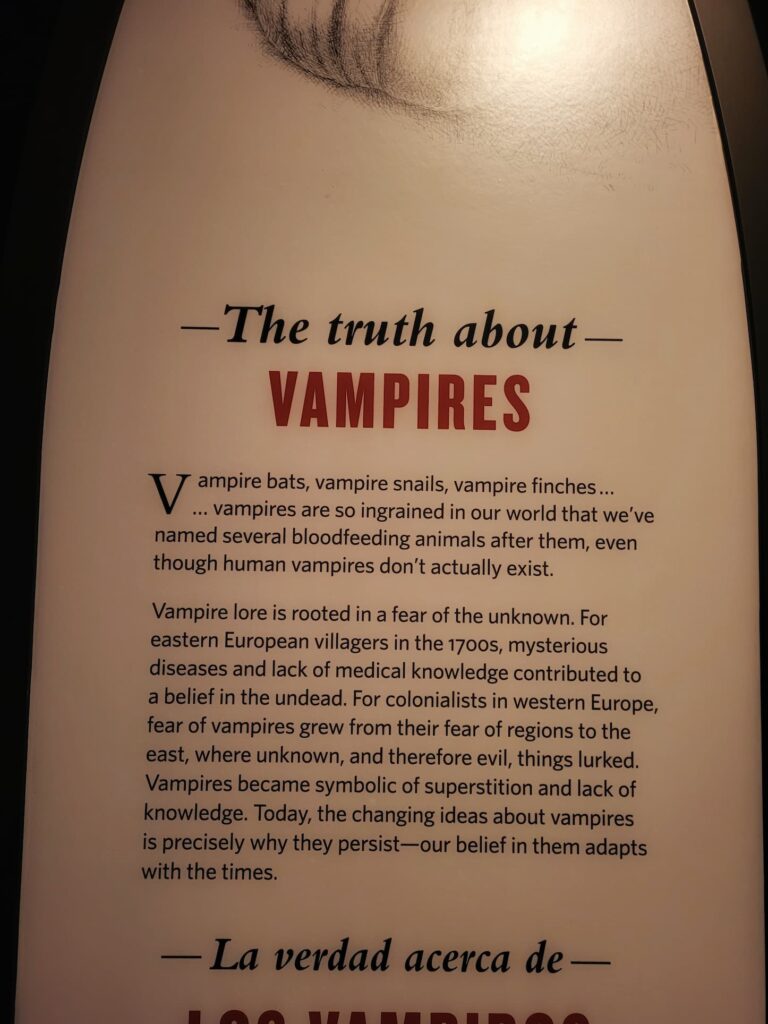
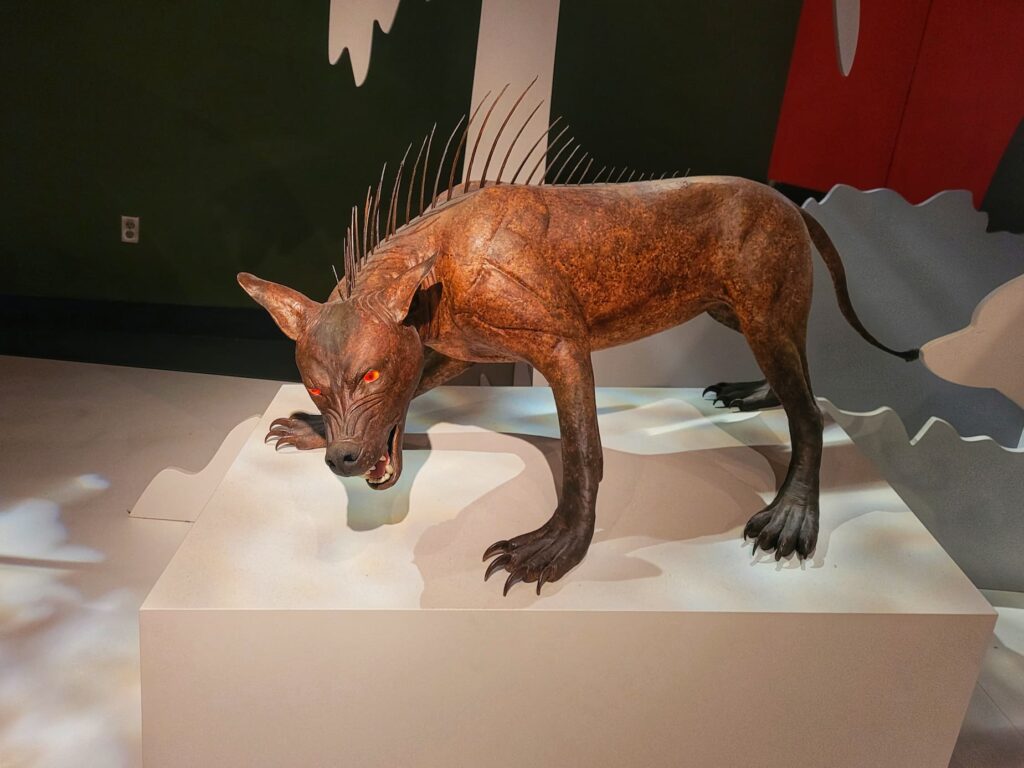
Pictured on the right is a Chupacabra- aka the goat sucker. The Chupacabra was actually only first reported in 1995; I had no idea it was so recent! It”s a creature that was reported originally in Puerto Rico and blamed for killing livestock. There have been alleged sightings in Mexico and the southern US too.
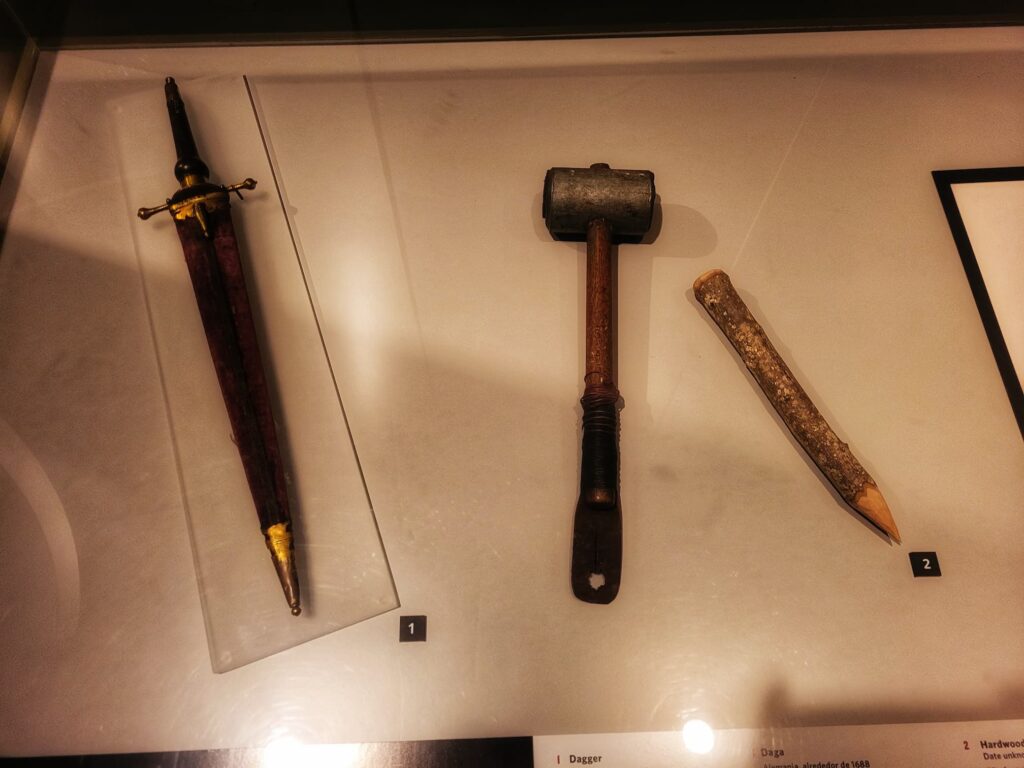
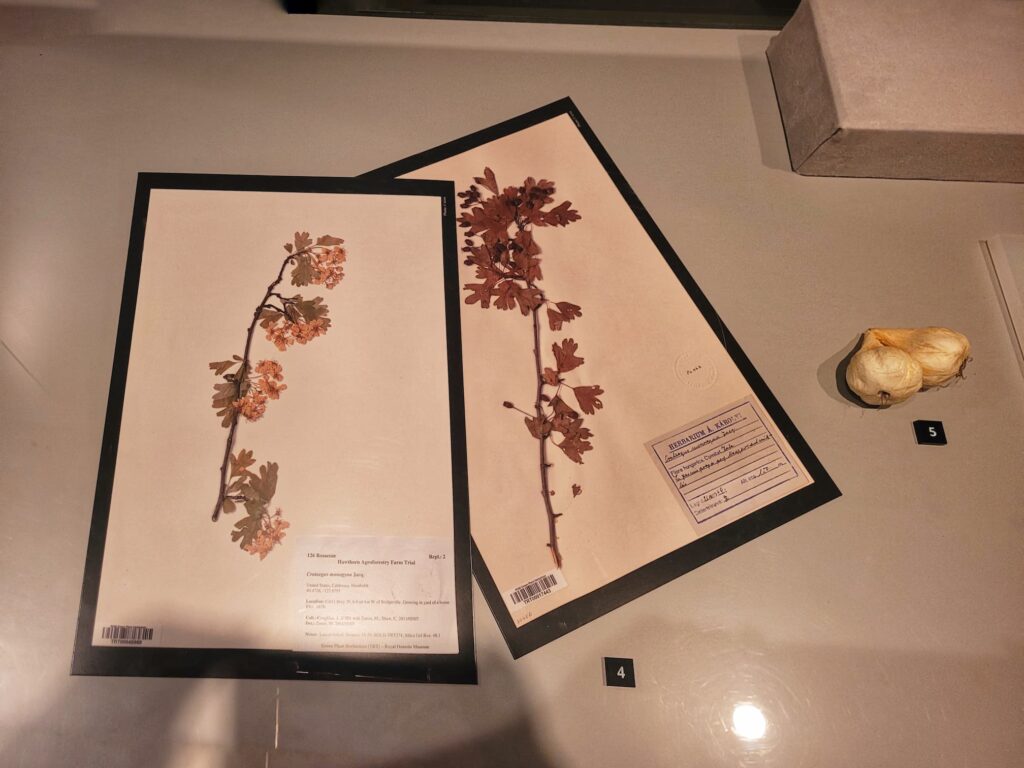
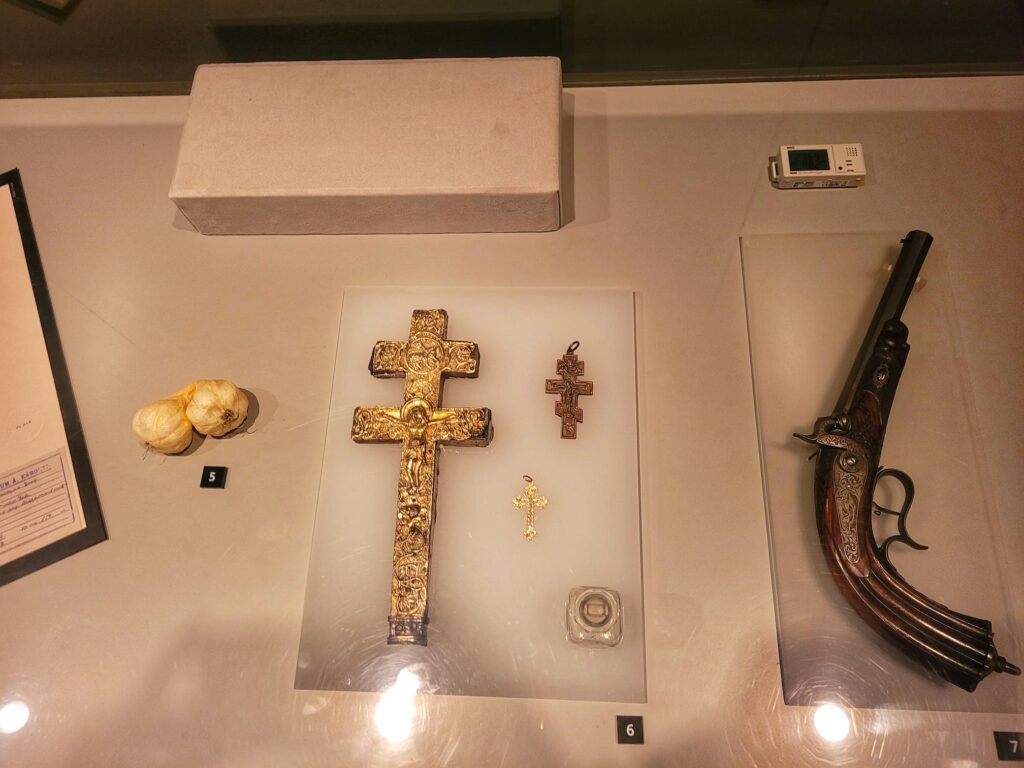
The exhibit above is all about how to kill a vampire. In the 1700s in Eastern Europe, dozens of bodies were exhumed and mutilated because they were thought to be vampires. From left to right: German dagger from 1688, hardwood & lead mallet, Hawthorn stakes, Hawthorn sprigs, garlic bulbs, Christian crosses and bottle from around 1900, German pistol from mid 1800s. In the 1700s, they actually wouldn’t have used pistols because the suspected vampires were already dead. Instead, they used things like the stakes to secure bodies from leaving their graves.
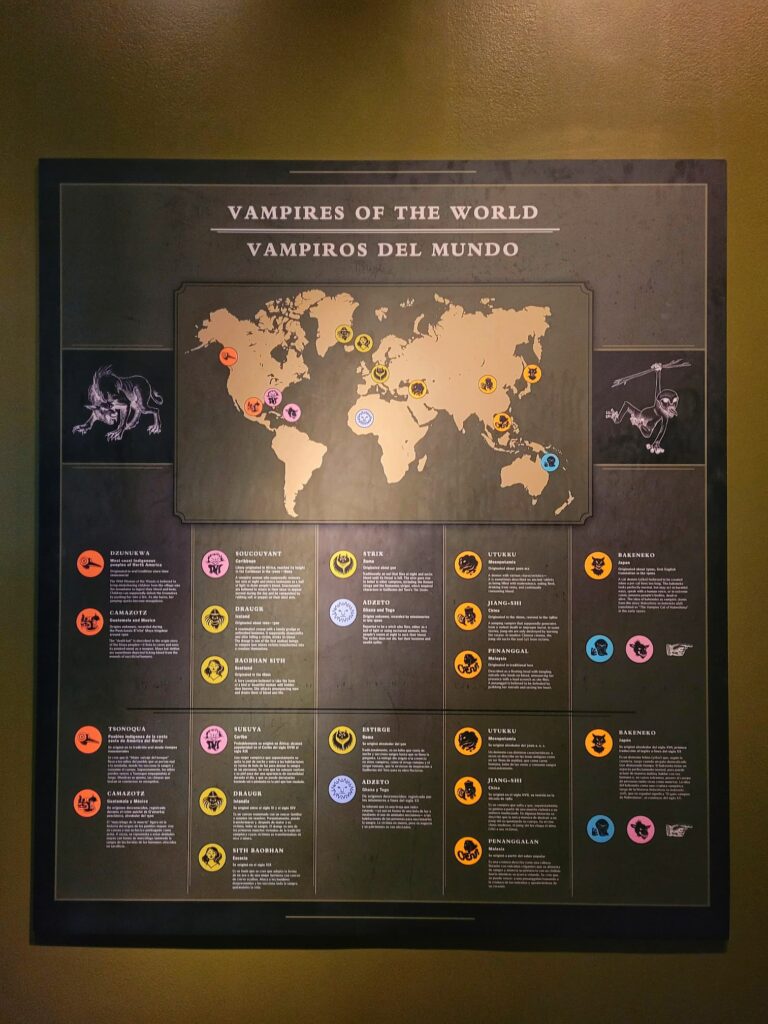
The next room of the exhibit takes us into the pop culture side of bloodsuckers.

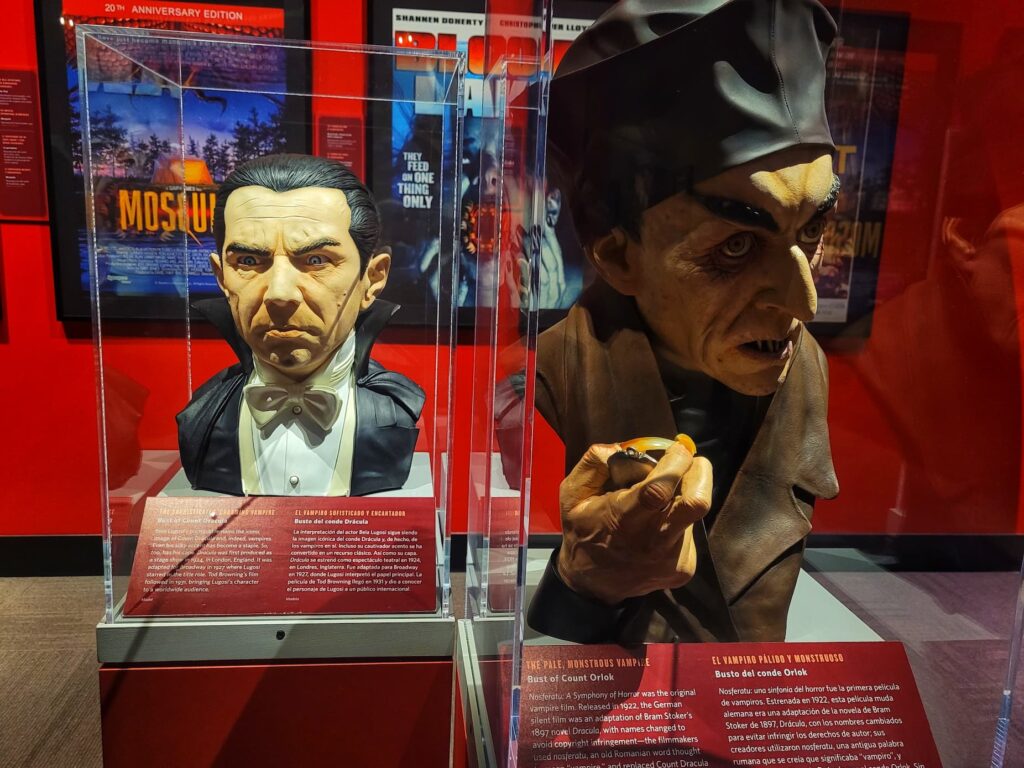
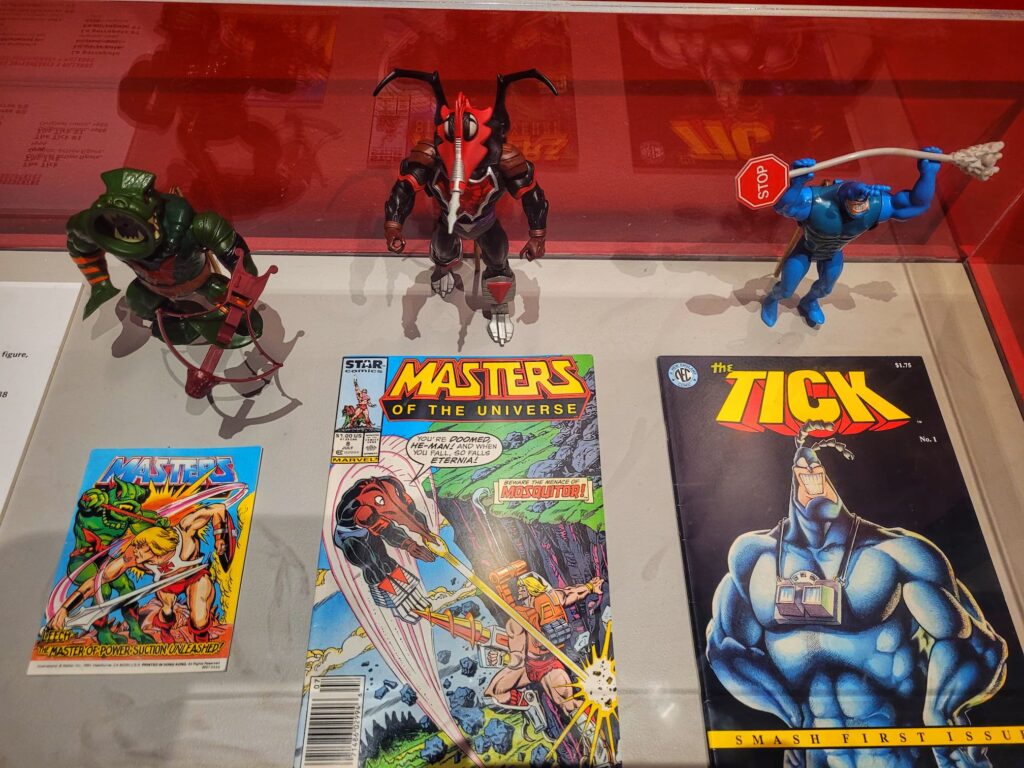
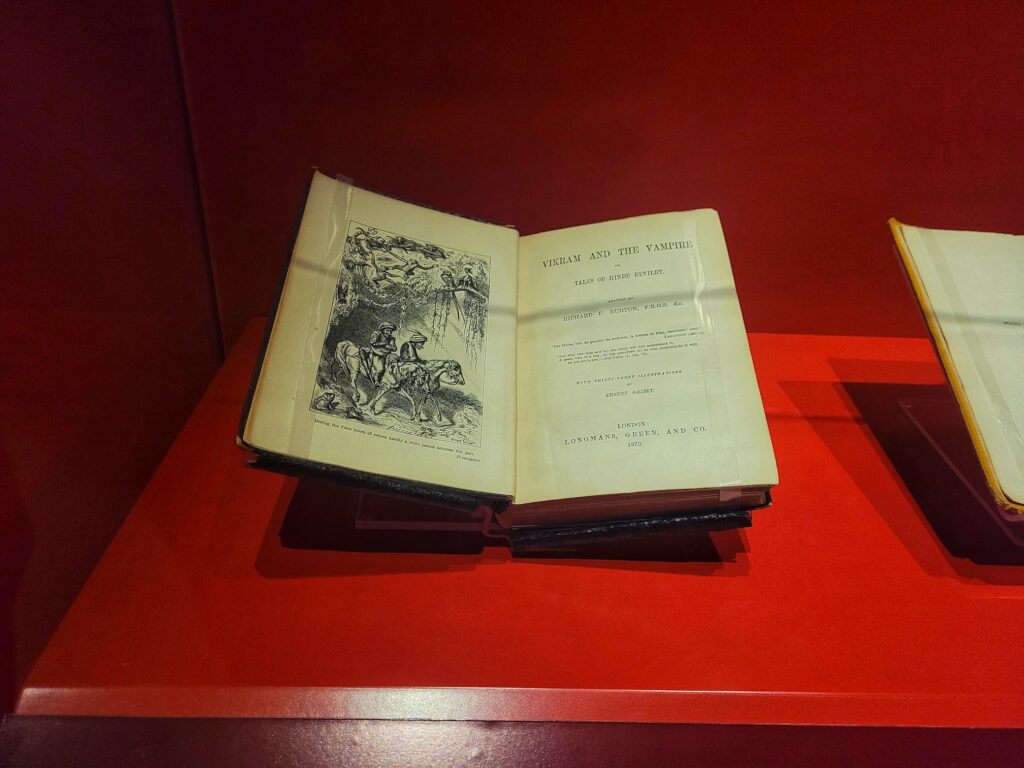
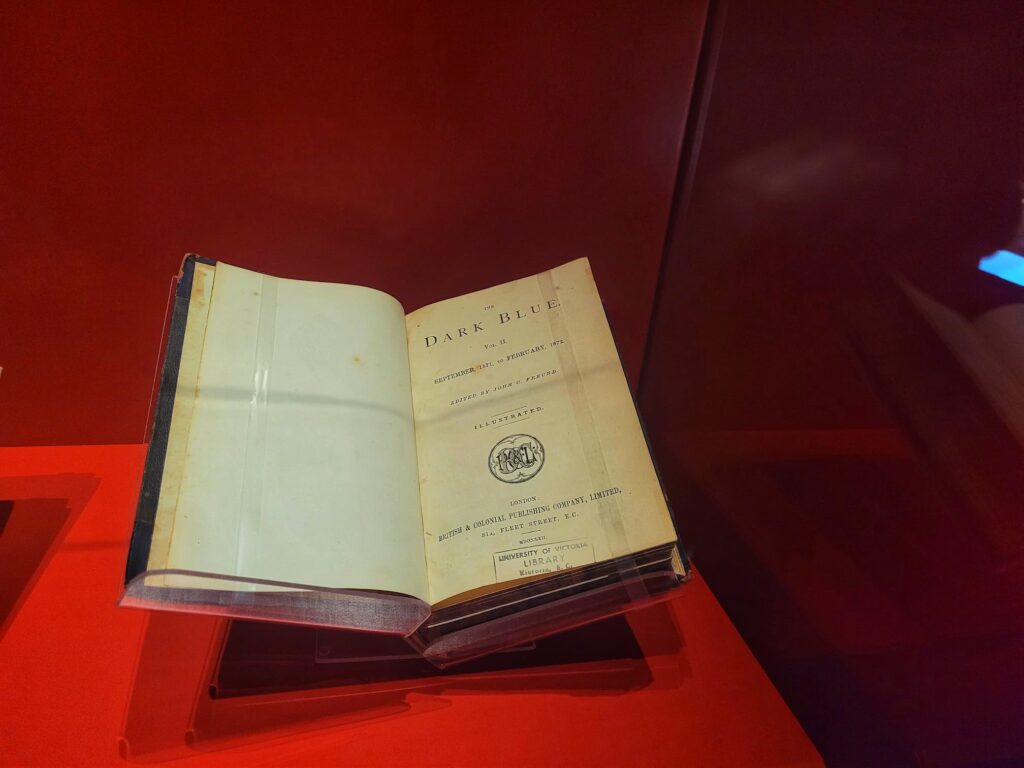
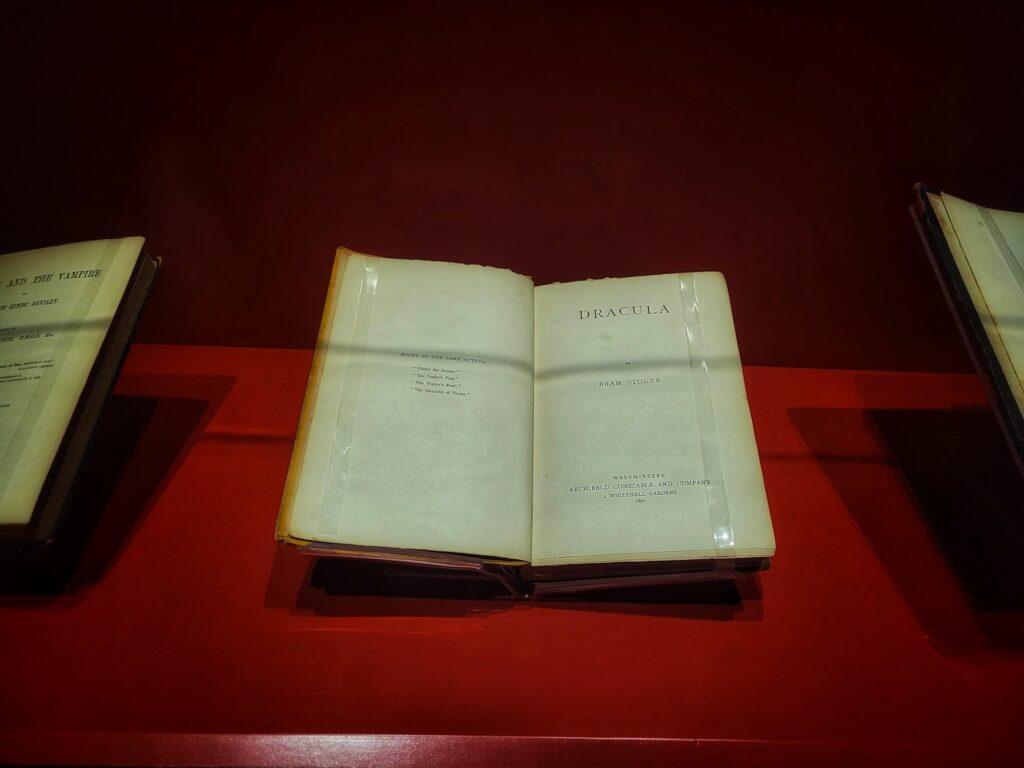
Books pictured above (left to right):
- Vikram and the Vampire, or Tales of Hindu Devilry: 1870 first edition of English translation. Novel based on Indian folk tales.
- Carmilla: 1872 first edition. Gothic novella published in three parts in The Dark Blue. Carmilla was the first female vampire in literature.
- Dracula: 1897 First Edition
The next section takes us back to real life, with a focus on the history of bloodletting and other medical uses for bloodsuckers.

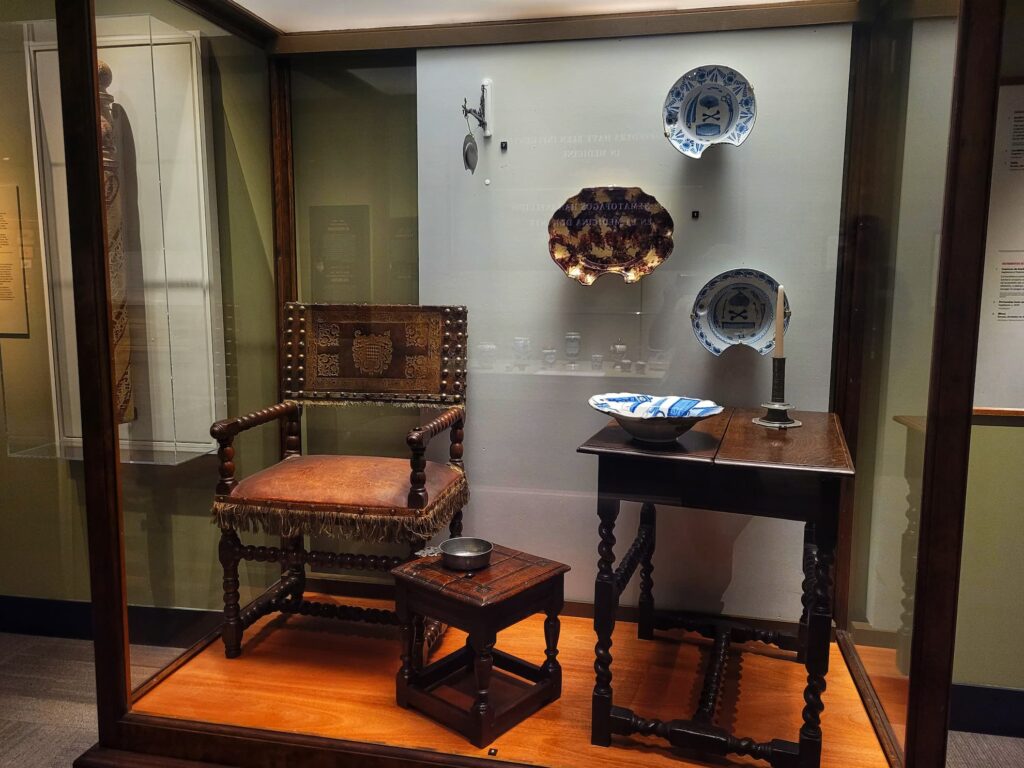
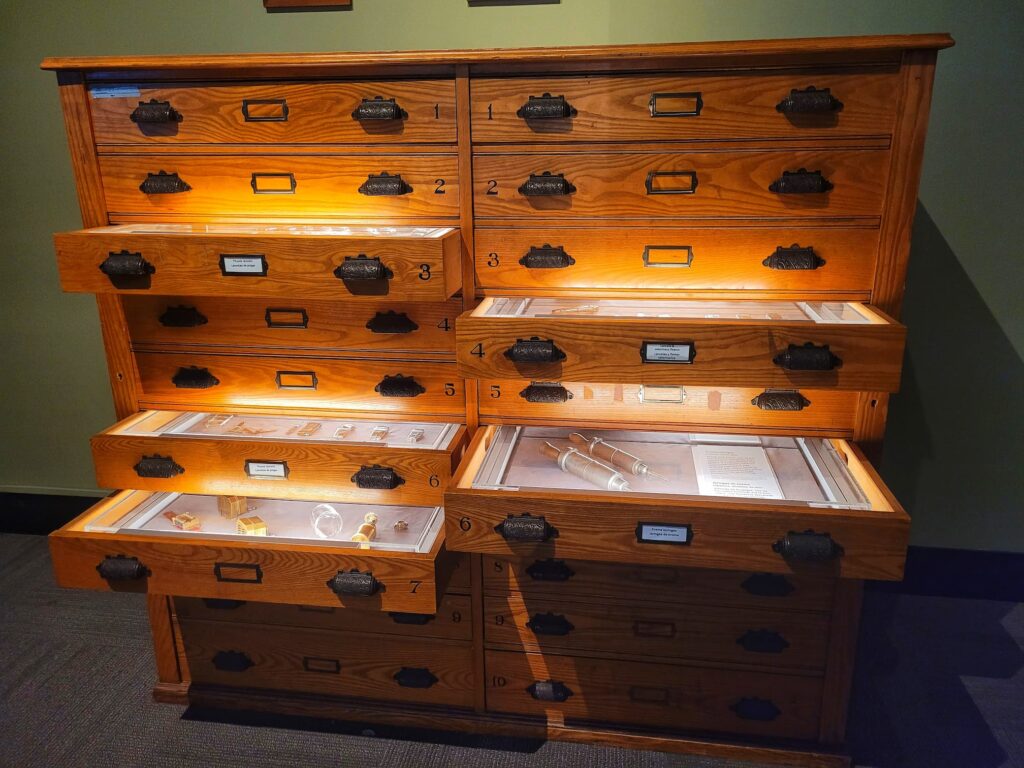
Then we learned about the diseases bloodsuckers can bring, such as lyme and malaria, etc. There was an aquarium of live ticks here, which we thought was pretty funny. Then the museum ended with a section on how to control pests that bring disease, but we felt like that section was pretty lacking. It mostly focused on insect repellents, and we thought there should have been more about how environmental design can help to control pests.
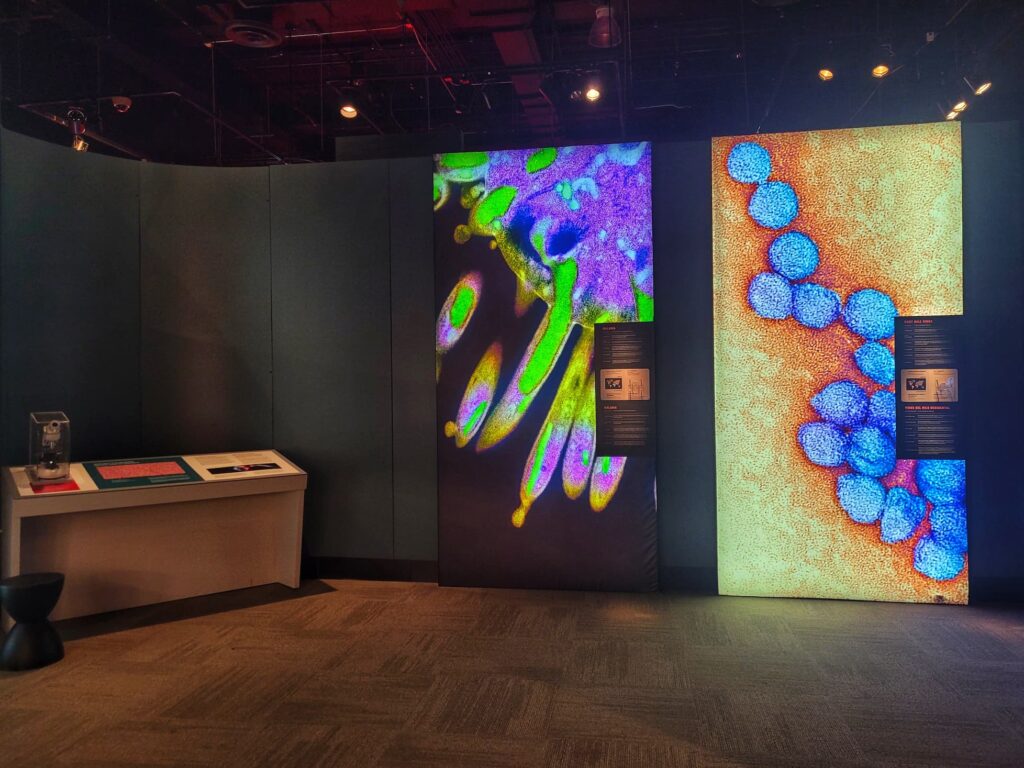
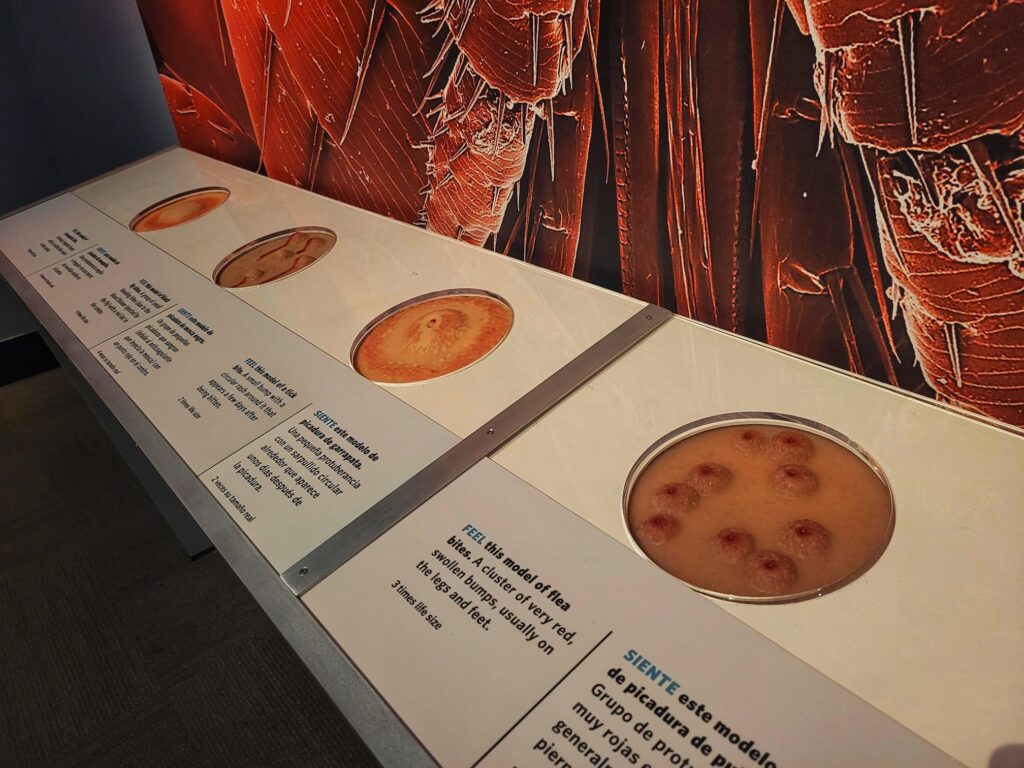
Getting to the Field Museum
The Field Museum is part of Chicago’s Museum Campus, which also includes the Shedd Aquarium, Soldier Field, Adler Planetarium, 12th Street Beach, and multiple parks. Museum Campus is right on the shoreline of Lake Michigan, and one of the most picturesque spots in the city.

Driving: If you choose to drive to the Field Museum, you have a couple options for parking. You can park in either the Soldier Field North Garage or the East Museum Lot. The Soldier Field North Garage is typically $25 for up to 4 hours or $30 for up to 12 hours- but the rates and availability do vary when Bears or Fire games are going on. The East Museum Lot is an outdoor lot that costs $30 for up to 12 hours.
CTA Train: The CTA (Chicago Transit Authority) train’s Red, Orange, and Green lines stop at Roosevelt station, just under a mile from the Field Museum. If you don’t want to walk from Roosevelt, you can also hop on the #146 bus which comes to Museum Campus.
CTA Bus: The #146 and #130 bus lines both stop at Museum Campus, however the #130 only does this during peak summer season.

Metra: If you are coming from the suburbs, consider taking the Metra. Our Metra line goes to Ogilvie Transportation Center and we like to walk to Museum Campus from the station- it’s just under an hour walk, which takes you through Millenium Park and past Buckingham Fountain. Union Station is a slightly shorter walk. You can also take the CTA, or grab an Uber from the train station
Tips for Visiting the Field Museum
When is the Best Time to Visit the Field Museum?
The Field Museum is a major tourist attraction, so the best times to visit are off-season, weekdays, and early in the morning. During the school year there are often school groups, so weekday late afternoons can also be a good time to visit.
When are Field Museum Free Days?
All the major Chicago museums offer free admission to Illinois residents throughout the year, in 2024 every Wednesday is free day at the Field Museum. You will need to show proof of your residency. Free admission is only for basic admission, so if you’re looking to see the Bloodsuckers exhibit, you can purchase a discounted All-Access or Discovery Pass.

What Field Museum Rules Do I Need to Know?
You are allowed to bring your own food and drinks to the Field Museum, but can only eat/drink in designated areas. You are also allowed to carry coats and backpacks in the museum, but there are lockers for rent if you don’t want to.
What Other Exhibits Should I See?
If you liked Bloodsuckers, you might also like:
- Underground Adventure (ticketed exhibit): An interactive exhibit that lets visitors experience what it’s like to be the size of an insect and learn about soil ecosystems
- Inside Ancient Egypt: Features a reconstructed tomb, mummies, and artifacts from ancient Egypt
- DNA Discovery Center: Provides interactive displays and demonstrations about genetics and the role of DNA in living organisms
- Oceans Unseen: Exploring the Field Museum’s New Temporary Exhibit





One comment on “Bloodsuckers: Legends to Leeches- An Inside Look at the Field Museum Exhibit”
Comments are closed.